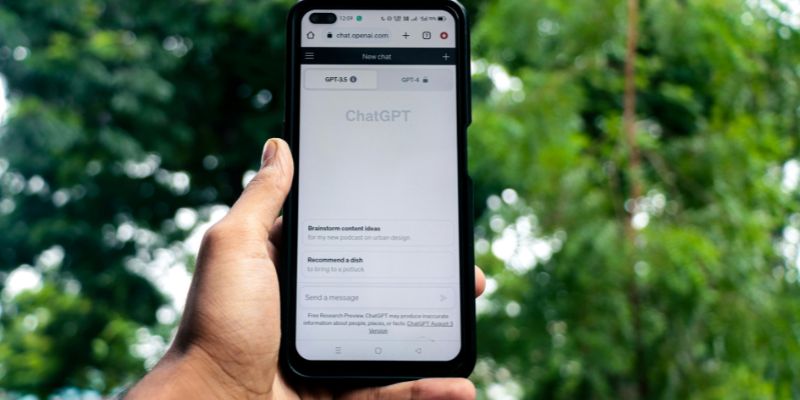The education system has been going through rapid changes, especially with the rise of artificial intelligence. One major area where AI is making a difference is in grading. Automated grading systems are now helping teachers by reducing the time they spend marking assignments, tests, and quizzes.
This technology is becoming more popular in schools and universities because it offers accuracy, speed, and useful feedback for students. Let’s explore how these systems work, why they matter, and what they mean for the future of teaching and learning.
What Are Automated Grading Systems?
Automated grading systems are software tools that use algorithms or artificial intelligence to assess student work. They are designed to recognize correct answers, evaluate written responses, and even offer suggestions for improvement.
These systems can be used for different types of student work:
- Multiple-choice tests
- Short answers and fill-in-the-blank questions
- Essays and written assignments
- Code and programming exercises
The more advanced the system, the better it gets at understanding and grading complex responses.
How Do These Systems Work?
At a basic level, automated grading systems compare student responses to a set of correct answers or use patterns from training data to make grading decisions.
AI-Powered Grading
More advanced systems use machine learning and natural language processing (NLP). These technologies help the system understand written language, context, and even grammar. AI models are trained using thousands of examples so they can:
- Detect spelling and grammar issues
- Understand sentence structure
- Recognize key ideas in an essay
- Score based on clarity, logic, and creativity
It makes them more accurate and reliable than older, rule-based tools.
Benefits of Automated Grading for Teachers

The shift to automated grading provides numerous advantages that can reshape the teacher’s experience positively.
Reduced Grading Time
Perhaps the most obvious benefit is time savings. Automated systems can instantly grade hundreds—or even thousands—of tests or quizzes, especially in objective formats like multiple-choice.
- A midterm exam that used to take hours can now be graded in minutes.
- Teachers can spend more time preparing lessons or providing one-on-one support.
Faster Student Feedback
Students often benefit from receiving quick feedback. Automated grading systems provide instant results in many cases, helping students understand mistakes while the material is still fresh in their minds. This real-time feedback loop promotes better learning and encourages students to improve.
Consistency and Fairness
Manual grading can sometimes be inconsistent. A teacher’s judgment may be affected by tiredness, unconscious bias, or mood. Automated grading systems, on the other hand, apply the same rules and standards across all submissions, ensuring fair treatment for every student.
- Essay graders evaluate based on predefined rubrics.
- Coding platforms check each student’s code with the same test cases.
Data Collection and Performance Insights
AI-powered systems often include built-in analytics. These features help teachers identify patterns in student performance.
For example:
- If many students score low on the same question, it could signal a gap in understanding.
- Teachers can adjust lesson plans based on this data to reinforce key concepts.
Where Automated Grading Works Best
While these systems are helpful, they’re not perfect. They work best in certain areas of education.
Good use cases:
- Grading standardized tests
- Scoring short quizzes and assignments
- Reviewing grammar and spelling
- Providing structure-based essay feedback
Less effective for:
- Creative writing evaluation
- Deep analysis of literature or art
- Emotional or subjective assignments
- Projects that require personalized input
These areas still benefit from human feedback and guidance.
Examples of AI Grading Tools
There are several tools already helping teachers with automated grading. Some of the most popular include:
- Gradescope – Helps grade handwritten and typed assignments using AI recognition.
- Quillionz – Creates and evaluates quiz questions automatically.
- Turnitin Draft Coach – Offers AI-based feedback on grammar, citations, and writing quality.
- Grammarly for Education – Provides grammar and writing improvement suggestions.
- Knewton – Adapts learning and grading based on student performance.
These tools are not just for grading—they also support learning through smart feedback.
Tips for Using Automated Grading in the Classroom

To make the most of AI-powered grading tools, teachers should follow a few best practices.
- Start small: Try it with one type of assignment first.
- Check the results: Always review how the tool grades before relying on it fully.
- Combine human and AI feedback: Let the AI handle the basic stuff while you focus on deeper learning.
- Train your students: Help them understand how the tool works and how to use feedback.
- Keep data safe: Make sure any student information is protected according to privacy rules.
Using these tools wisely can create a better experience for both teachers and students.
Challenges and Limitations
While AI grading is helpful, there are still some concerns and limitations to be aware of.
- Misunderstanding Context: AI might misread sarcasm, humor, or cultural references in essays.
- Risk of Over-Reliance: Teachers may start trusting the system too much, reducing personal involvement.
- Data Privacy: Some tools store student data in the cloud, which raises privacy issues.
- Cost and Access: Some AI tools are expensive or require strong internet access—not all schools have that.
Still, many of these issues can be managed with proper training and awareness.
Conclusion
Automated grading systems are transforming how teachers manage their workload. By using AI, educators can save time, reduce stress, and focus more on teaching and student interaction. These systems also offer faster, more consistent, and fairer evaluations. While AI cannot replace the human touch in education, it serves as a valuable support tool. With proper oversight and balance, automated grading can enhance learning experiences. It empowers teachers to deliver better education with less administrative pressure. As technology evolves, its role in classrooms will only grow stronger.











